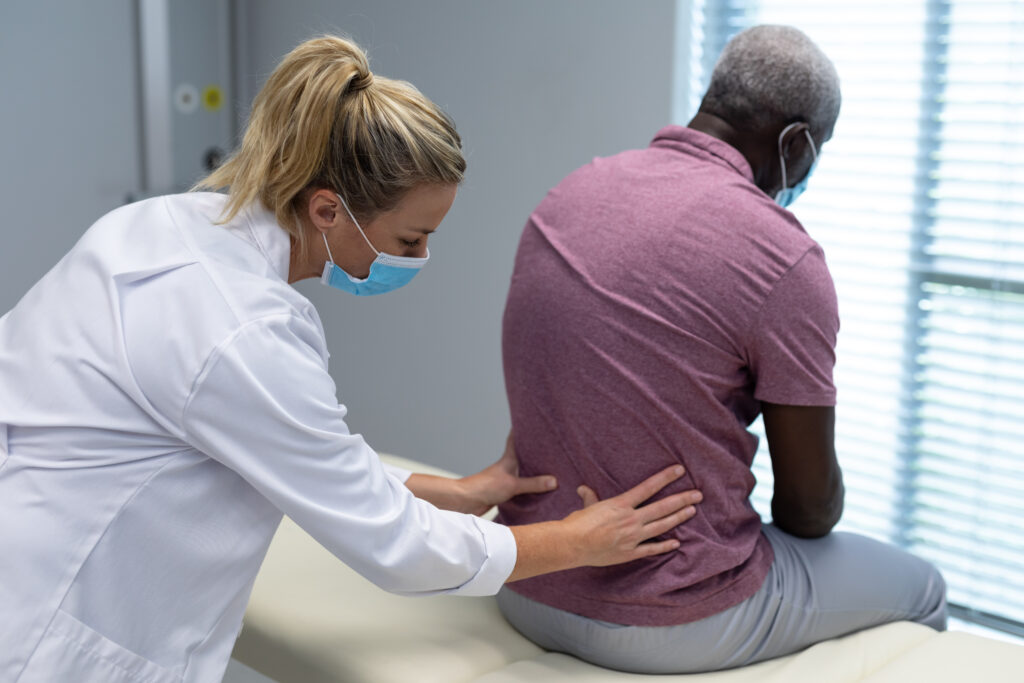Tailbone pain, also known as coccyx pain or coccydynia, can be an incredibly frustrating and uncomfortable condition. Many assume that tailbone pain stems from a fall, injury, or trauma. However, what if you’re experiencing tailbone pain without any obvious cause? If this resonates with you, you’re not alone, and there are explanations and solutions that can help.
In this article, we’ll delve into possible causes of unexplained tailbone pain and provide insights into effective treatments.
Understanding Tailbone Pain: Is It Really Unexplained?
The tailbone, or coccyx, is a small triangular bone at the base of your spine. Though small, its role in supporting your posture and balance is significant. When it hurts, it’s a real “pain in the butt,” as anyone who’s experienced it will agree.
Commonly known causes of tailbone pain include:
- Falling directly onto the tailbone (e.g., slipping on ice).
- Trauma from sports activities, such as skiing or football.
- Excessive pressure from activities like sit-ups or crunches.
- Childbirth, which can strain or dislocate the coccyx.
But what about when no such events have occurred? Why would the tailbone start hurting seemingly out of nowhere?
The Hidden Role of the Pelvic Floor Muscles
For those unfamiliar with the term, the pelvic floor muscles are a group of muscles located at the base of your pelvis. These muscles play a crucial role in supporting internal organs, maintaining bladder and bowel control, and even contributing to sexual function.
When these muscles are injured, tight, or overworked, they can develop trigger points—tight bands of muscle tissue that are sensitive to touch and can radiate pain. These trigger points may:
- Cause tailbone pain that doesn’t seem to improve.
- Refer pain to other areas, including the buttocks, rectum, or even the genitals.
In many cases, trauma to the tailbone, such as childbirth or a fall, can cause these muscles to become tense or spasmodic. However, even if you haven’t experienced an obvious injury, tight or strained pelvic floor muscles may still be the underlying cause of your pain.
How Pelvic Floor Dysfunction Mimics Tailbone Pain
Unexplained tailbone pain can sometimes be a result of issues in the surrounding areas, such as:
- Low back injuries: Sprains or strains in the lower back can impact the pelvic floor, which, in turn, pulls on the tailbone.
- Hamstring injuries: The hamstrings attach near the pelvis, and any injury or tightness here can lead to pelvic floor tension, affecting the coccyx.
- Postural issues: Sitting for extended periods or maintaining poor posture can create strain in the pelvic area, leading to discomfort in the tailbone.
This interconnected system means that even a seemingly unrelated injury or condition can result in tailbone pain.

Symptoms to Watch For
If you’re experiencing unexplained tailbone pain, you might notice:
- Pain while sitting, especially on hard surfaces.
- Tenderness around the base of the spine.
- Pain radiating to other areas like the buttocks, rectum, or genitals.
- Increased discomfort with activities like bending or rising from a seated position.
For women, pain can even extend into the vaginal area, while men might feel discomfort in the scrotal or penile regions.
Treatment Options for Tailbone Pain
So, what can you do if you’re dealing with persistent tailbone pain? While medications and injections may offer temporary relief, they don’t address the root cause—especially if the pain stems from pelvic floor dysfunction. Here’s what you should consider:
1. Seek Help from a Pelvic Floor Physical Therapist
A pelvic floor physical therapist specializes in treating the spine, hips, and pelvic floor as a whole. These professionals are trained to:
- Identify trigger points or muscle imbalances contributing to your pain.
- Provide manual therapy to release tightness in the pelvic floor muscles.
- Offer exercises to strengthen and support the pelvic region, reducing strain on the coccyx.
2. Stretching and Strengthening Exercises
While working with a physical therapist, they may recommend specific stretches and exercises to alleviate pain. These might include:
- Gentle stretches to relieve tension in the pelvic floor and surrounding muscles.
- Core strengthening exercises to improve posture and provide better support to the tailbone.
3. Adjust Your Sitting Habits
Prolonged sitting on hard surfaces can exacerbate tailbone pain. Consider using:
- Cushions designed to reduce pressure on the coccyx.
- Ergonomic seating to encourage proper posture.
4. Address Related Issues
If you’ve had a recent injury or experience chronic low back or hamstring tightness, treating these issues can also alleviate tailbone pain. A comprehensive approach that considers your entire musculoskeletal system is essential.
When to See a Specialist
If your tailbone pain persists despite trying at-home remedies or traditional treatments, it’s time to consult a specialist. A pelvic floor physical therapist is uniquely qualified to assess the pelvic region and tailor a treatment plan to your needs.
Conclusion
Unexplained tailbone pain can be puzzling and debilitating, but understanding its connection to the pelvic floor can provide clarity and relief. By addressing the underlying cause—whether it’s pelvic floor dysfunction, postural issues, or referred pain from nearby injuries—you can effectively manage and overcome this condition.
If you’re struggling with tailbone pain that just won’t go away, don’t lose hope. With the right care and guidance, relief is possible, and you can return to sitting comfortably once again.
Also Read: Prostatitis and Male Pelvic Pain: How Physical Therapy Can Help
I’m Hina Sheth. I have been treating complex orthopedics, sports and pelvic floor physical problems for over 25 years with amazing results. Now I want to bring my knowledge to the global community so I can spread my knowledge to you.
Our bodies are complex systems of 600 muscles and organs intertwined in a fascial system that all work together. Imbalances in this system such as trigger points, visceral and myofascial restrictions can lead to joint, pelvic, and organ issues.
Factors like nutrition, exercise, sleep, and stress play a crucial role. Unfortunately, our current healthcare model does not look at our bodies as a whole and oftentimes compartmentalize musculoskeletal injuries and dysfunctions.
At Rebalance, our goal is to holistically treat this complex system to restore harmony in the body. By addressing these imbalances, we help clients improve their overall health and well-being. Our vision is to empower individuals to create a healthier lifestyle for themselves.






